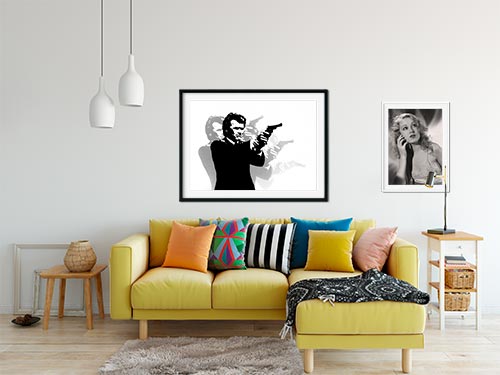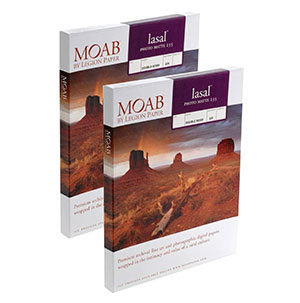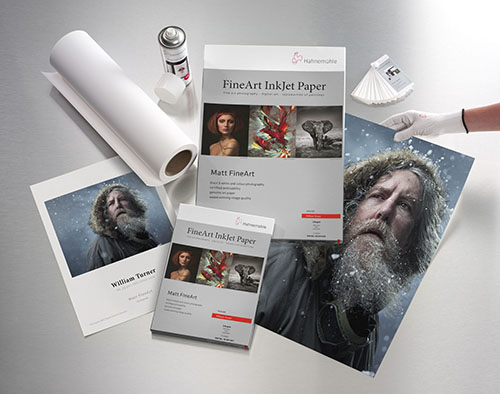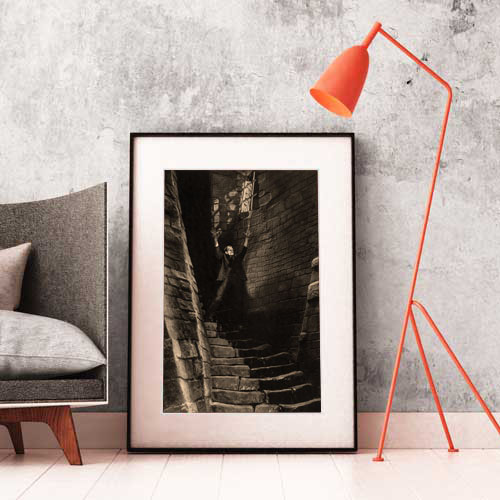Exceptional theatrical publicity shot featuring John Carradine (Count Dracula) with his black satin cape stretched out, standing over Anne Gwynne (Rita Hussman) and Peter Coe (Carl Hussman), as they both read a copy of the movie script.
House of Frankenstein is a 1944 American horror film starring Boris Karloff, Lon Chaney Jr. and John Carradine. Based on a story by Curt Siodmak, it was directed by Erle C. Kenton and produced by Universal Pictures. The film is about Dr. Gustav Niemann, who escapes from prison and promises to create a new body for his assistant Daniel. Over the course of the film, they encounter Count Dracula, Larry Talbot, the Wolf Man, and Frankenstein's Monster.
Universal had initially planned a film titled Chamber of Horrors to include several of their horror-themed characters, but this project was halted with the idea later revived as House of Frankenstein. Filming began on April 4, 1944, with the highest budget set for a Universal Frankenstein film at that time. Filming ended in early May with screenings starting in New York on December 15, 1944. It was not among the highest-grossing films for Universal that year, but it managed to out-gross other Universal horror-related output such as Ghost Catchers (1944) and The Invisible Man's Revenge (1944). Upon its release, film historian Gregory W. Mank notes that the critics "made mincemeat" out of it. Retrospective reviews focused on the absurdity of connecting the monsters together and the lack of scares in the film. A sequel titled House of Dracula that involved much of the same cast and crew was released in 1945.
House of Frankenstein was shown at the 594-seat Rialto Theatre in New York City on December 15, 1944. The film was so popular that it ran all night and then played at the theatre for three weeks. On December 22, House of Frankenstein and The Mummy's Curse opened at the 1,100-seat Hawaii Theatre in Hollywood. The film continued screening there for six weeks. On February 20, the film had a week-long run at Los Angeles's 2,200-seat Orpheum Theatre. The film was distributed theatrically by Universal Pictures.
The film was released nationally on February 16, 1945, following the initial in New York premieres in December 1944. According to the National Box Office Digest, the film grossed between $200,000 to $500,000. It was not among the highest grossing films for Universal that year which included Can't Help Singing (1944) and Ali Baba and the Forty Thieves (1944), as well as the studio's other horror outings with The Climax (1944). It managed to out-gross similar horror-related output from Universal such as Ghost Catchers (1944) and The Invisible Man's Revenge (1944).
Product Enquiry
Kodak Professional Endura Paper
Kodak Endura papers provide an incredible amount of detail and smooth transition of tones. Designed for the professional photographer in mind, looking for a more traditional photo print style, Kodak Endura provides an extended print life and color gamut almost at the level of a high end fine art paper print.
Archival Matte Paper
Archival Matte Paper, also known as Moab Lasal Photo Matte, is our house stock fine art paper and is an economical favorite for fine art reproductions and photo prints. It features a smooth surface, heavy weight (230 g, 9.5-mil), neutral white, matte paper engineered for accurate color reproduction that provides high contrast and high-resolution output. This paper is acid-free, making it the perfect choice for both photography & fine art reproductions.
Giclee William Turner Paper by Hahnemühle
The William Turner by Hahnemühle is one of the most popular papers used in the Giclee printing industry. This is a 310g natural white mould made natural line paper with 100% rag content making it highly archival. It has a slight coarse texture which gives photos and artwork an elegant look. These fine art paper prints (also known as Giclee) are ordered by galleries, individual artists and photographers. The papers and inks are not only archival but use some of the most accurate print technology for full color prints.
- Giclee prints use very expensive archival pigmented inks.
- Highest level of color gamut available in printing (12 color printing).
- Exceptional black & white printing.
- Fade resistant, pigmented inks which provide a superior color range compared to other types of inks. Widely preferred in fine art and photography circles.
- We ONLY use professional grade fine art and photo paper that resist yellowing and aging.



Framing
We offer wood and metal frames, custom cut & joined to order. Each framed print includes hanging hardware and foamcore backer.
Matting
We use conservation grade 100% virgin alpha-cellulose 2 ply mats with white core. Acid-free and lignin-free, these are both face resistant and meet all conservation quality standards set by the Fine Art Trade Guild. Mats are digitally cut for ultimate precision. The window will be 1/8″ smaller than the print dimensions.
Glazing (Acrylic Glass)
We offer custom cut panes of shatter-proof, acrylic glass, to protect your valuable artwork and prints.
Premium Clear
Framing grade clear acrylic is shatter resistant and lightweight.
Reflection Control
With its matte finish, Tru Vue Reflection Control® Acrylic scatters light to diminish unwanted glare.
Conservation Clear
Tru Vue Conservation Clear® Acrylic is a framing industry staple, blocking up to 99% of UV rays for ultimate protection.
Conservation Reflection Control
Tru Vue Conservation Reflection Control® Acrylic scatters and diffuses light to reduce unwanted glare. Blocks up to 99% of UV rays.







